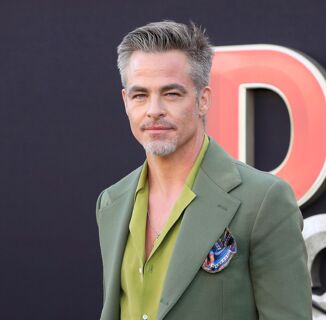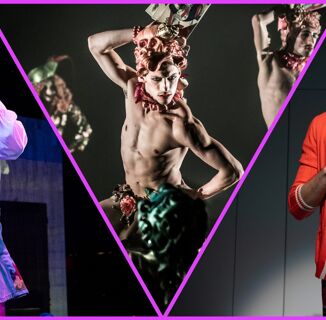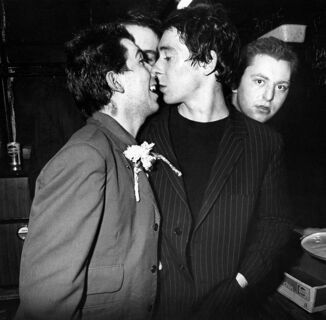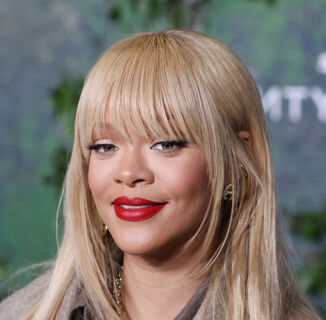My therapist reminded me, “Summer’s coming up.” She asked if I’d need to see her twice a week. This was a joke (she knows I don’t have that kind of money), but she was serious when she gave me some homework: Delete Instagram.
“So you can avoid… What did you call them?” She looked through her notes. “Oh, yes, the ‘white gay muscle thots.'”
She and I were lovingly referring to my white gay male peers, specifically those with Barry’s Bootcamp bodies and his-and-his disposable incomes, whose social media feeds shone brightest in the summertime. The season sees their Instahunk aesthetics pushed to the apex: Weekly trips to Fire Island, daily snaps in Speedos, and flings on flings on flings.
Since the American institution of Summer™ has historically emphasized similar goals — Get a bikini body! Have a summer fling! — it means, from Memorial Day to Labor Day, the cultural imagination seems to leave room for only the modus vivendi largely exclusive to white masculine bodies.
This is fine! Good for them! And not to say folks unlike them can’t enjoy the summer in this manner. The more brown, black, fat, twinky, beary, trans, and non-binary thirst traps from the beach I can shower with heart-eyes emojis, the better! It’s a joy to see bodies regularly marginalized by the mainstream post up in such spaces proudly, defiantly.
The fact is: Anyone is free to have a carefree, sun-kissed summer. Provided time and resources, anyone can abscond to the nearest body of water, kiss a seasonal tryst, and flaunt their body, wherever and however, safely and happily. Summer is a playground for everyone. But I feel barred from playing. That the summer turns my social landscape into a psychic minefield is a product of my own conditioning, rooted in my personal experience as a gay man of color.
As a Filipino kid in Manila, I was told to stay out of the sun. Our elders insisted my cousins and I stay in the shade, play instead where the light couldn’t get us. Otherwise, they said, “i-itim kayo,” instilling in us the colonized fear of “getting dark.” Filipino culture’s colorism problem extended into popular media and its idolatry of light-skinned celebrities, spon-con masters in their own right. On my commutes to school, I’d see them on billboards, promoting cosmetic weight-loss surgery and well-engineered physiques, my education in the currency of a specific kind of beauty. When I asked my parents to buy me skin-lightening products, they refused. Instead, they pinched my nose, “para tumangos,” so it would grow sharper.
My relationship with my body grew more complex when I moved to the United States. Not only did I have to contend with the rise of the internet and apps, which further challenged a teenager’s self-worth, I also had to face the local billboards; my family had moved to Las Vegas and my new commute to school featured ads for the all-male, mostly-white, adult revues The Chippendales and Thunder Down Under. When my mother bought a Bowflex, an all-in-one home gym contraption, I committed myself to it for about a month, tops. I’d planned to be a Chippendale for Halloween, but I gave up when I realized what I’d actually wanted was to turn my body into something else entirely: masculine, muscular, white.
I came out as gay at 13 and it did not get better. As I lived more in my sexuality, my second skin, the way I saw my body became more distorted. The primary site of this negotiation is rooted in the underwear section at department stores. Men like David Beckham for Armani, Freddie Ljungberg for Calvin Klein, they did their part, helping me better understand my sexuality. But they also epitomized what I believed a man must be to be sellable, to be desirable.
My teenage brain said, “That’s what everyone wants, myself included; but because I don’t look like that, how could anyone want me?” I’d been so conditioned to believe only white muscular men were desirable, that I, a brown skinny gay boy, was dually made to want men unlike me and to want to be men unlike me. In the underwear section, I’d cover my hard-on with the baggy long-sleeved shirts I’d wear to hide my own body, my arms, my tummy, my concave chest.
But then along comes summer, the season of skin, a time to be displayed, witnessed, scrutinized. When the mercury rises, so do my anxieties. In high school, I rarely attended pool parties, kept my shirt on when I did. In college, when everyone was getting high and tanning by the lake, I was drinking wine under the shade of a tree. As an adult, I turn down invites from well-meaning friends to go to the Pines or to Miami, to the beach or to the park, too self-conscious of how I’m too self-conscious. And from the safety of my air-conditioned studio, I scroll through Instagram, witness the fun being had by everyone else, my peers of all stripes, and face a summer-flavored FOMO as I figure out what’s best for my mental health.
I’m not blaming social media, Fire Island, or white men. (They are at fault in various other ways.) The summer forces me to grapple instead with my own learned conditioning. I was taught my body was something I cannot display, something that cannot be loved, by others or myself. So I respect and admire folks like me who’ve shed the discontents of our marginalized bodies. “Fuck all that!” they say. “Be proud of what you have!”
Indeed, I and others like me have privilege when negotiating body politics. I’m able-bodied and cisgender, and gay spaces are historically more welcoming to skinny men like me than fat men. For every gaysian twink who’s too paralyzed by the harmful expectations of a heteronormative, predominantly white America, there’s another who’s in full thot regalia, saying fuck it to all that, proud of what they have. And rightly so! To paraphrase from Twitter: In a society that profits from self-doubt, liking yourself is a radical act. That’s what I’m striving towards.
But as I work on that, I don’t want to forgo a summer lived well. After all, as much as it’s a time to flaunt, it’s also a time to gather with people you love and to celebrate. So if I don’t enjoy the season in its classical form, what does a happier summer look like for me? This year, rather than pine for what I’ve been conditioned to want, I’m trying to celebrate what I do have.
If not a beach-ready body, then a museum trip and brunch with my sister and her girlfriend in town on vacation. If not weekend getaways to Montauk, then writing sprints at cafés with friends when we’re released for Summer Fridays. If not a life-changing summer romance at my parents’ Italian villa, then home-cooked dinners in Brooklyn with queer creatives where the hosts didn’t turn up the oven.
At one of these dinners, I met another queer Asian who spoke of managing his own anxieties inhabiting an othered body. He wore a fabulous knit crop top as he worked to love summer, love himself in summer. The first step, we agreed, was to understand why and how we were othered. To resist those trappings by taking care of ourselves was the next, regardless of season.
Because privilege, marginalization, and their anxious discontents are perennial, so are the battles we fight every day to be accepted in spaces mainstream or otherwise. As INTO staff writer Mathew Rodriguez tweeted, we exist within the systems we try to combat and it’s imperative that we allow ourselves to feel what we do even as we rail against them. All the more reason to establish ways we can take care of and celebrate ourselves.
1. “You can be a queer activist and still be queer.”
My therapist said this to me today because today in therapy I spoke about my problems adjusting to LA and how much of that has to do with me being a person of size and feeling like there is no welcoming space for me here.
— 𝚑𝚒𝚜𝚙𝚊𝚗𝚒𝚌 𝚙𝚒𝚡𝚒𝚎 𝚍𝚛𝚎𝚊𝚖 𝚐𝚒𝚛𝚕 (@mathewrodriguez) June 11, 2018
As for the homework my therapist gave me, I didn’t delete Instagram. Some exposure therapy might do me good (and I’ve canceled my subscriptions to their OnlyFans accounts, so I may as well). But the principle stands: Whenever my self-doubts flare up, I have to adapt, be more intentional about where and how I take up space in service to my mental health.
So this summer, you’ll see me out in the sun, with plenty of SPF, perhaps on a rooftop or at a table outside, definitely with friends and an Aperol spritz. You might even see me post up shirtless on my Instagram, spend a beach day with white gay muscle thots, or kiss a boy who actually likes me back — what a concept! I’ll do so as I learn to love summer, do so as I develop my relationship with my body, my self.
Image via Getty
Help make sure LGBTQ+ stories are being told...
We can't rely on mainstream media to tell our stories. That's why we don't lock our articles behind a paywall. Will you support our mission with a contribution today?
Cancel anytime · Proudly LGBTQ+ owned and operated
Read More in Culture
The Latest on INTO
Subscribe to get a twice-weekly dose of queer news, updates, and insights from the INTO team.
in Your Inbox














